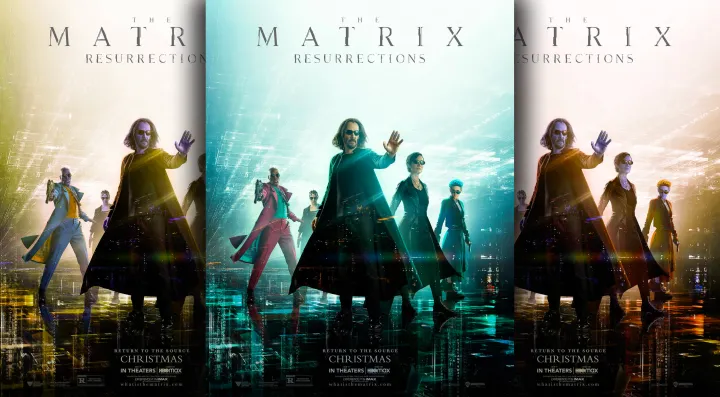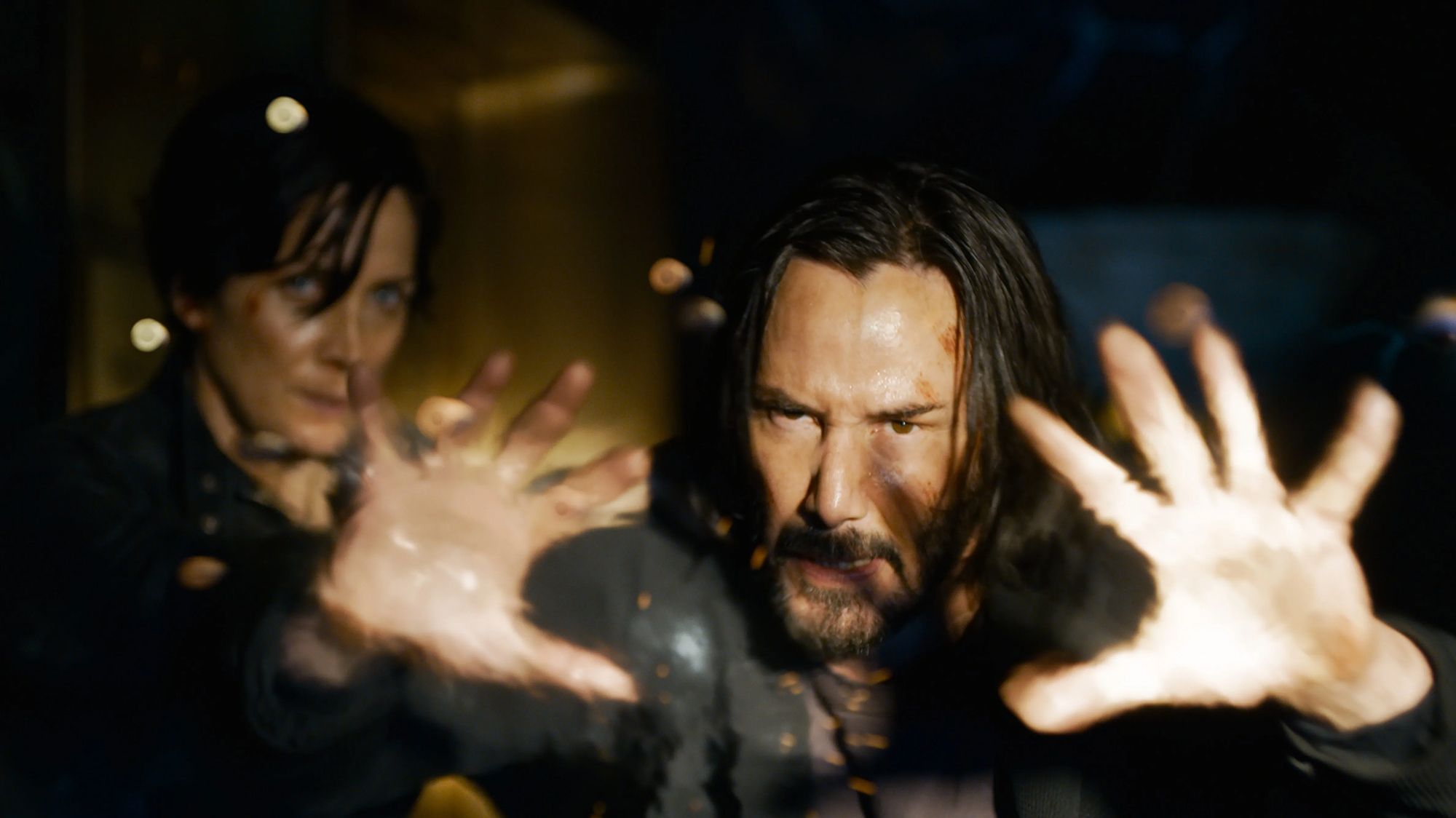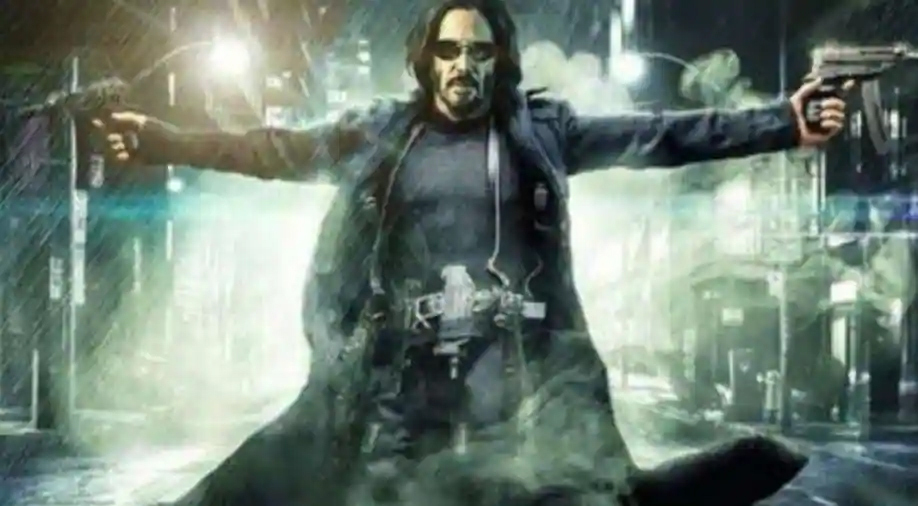FILM REVIEW
The Matrix: Resurrections, a product of late-stage capitalist postmodern hyperreality

From recurring characters to small, highly specific homages to what the characters have become best known for, Matrix 4 is just a jumble of signifiers without referent, that signify other signifiers down an endless chain of signification that spans the entire original trilogy.
To be upfront, I love the original Matrix trilogy. This is not just because of the way it satisfies my particular preferences for sci-fi world-building, but also because of the many risks it took with its mode of storytelling, and especially because it dared to think deeply while coming right from the factory of ankle-deep consumer-friendly popular culture that is US American cinema.
The kind of cinema that comes out of Hollywood oscillates between thinly veiled jingoist propaganda (superhero movies) to consciously art-for-the-sake-of-art-style homages to a combination of western history and the history of US American cinema itself.
Hollywood only allows itself to think when it criticises the many “isms” of the United States, and it only does so in the feckless and faux-reformist affectations that orbit the denomination “liberal”. In that desert of meaning, the Matrix trilogy came as an absolute anomaly, for many reasons: it asked what it means to be a human when our lives are so deeply embedded within Heideggerian “enframing” (a mode of living where sensible nature is nothing but “standing reserve” for uncritical modernising efforts modelled through cybernetics) that the very difference between humans and machines starts to break down, and the task of living requires taking unexpected turns, living among strange bedfellows, and taking difficult leaps of faith – much more than imposing a determinism/free will binary, it showed the recurrence of this binary in multiple emergent scenarios located within its setting.
Above everything, the original Matrix movies dared to be difficult to follow, they did not answer the questions they raised in a clear way, but the story was nevertheless so carefully crafted that, were one able to pay attention to the details, they would find the answers. Nothing was left unexplained, and nothing that was explained was done so in the usual, boring Hollywood way that generally amounts to the equivalent of being punched in the face with the obvious. That they were able to do that and still be purposefully entertaining sci-fi (as opposed to, say, Tarkovsky’s Solaris, which was allegedly made to have a slow, deliberately boring first hour to “weed out those who cannot think”) is a fantastic achievement.
The Matrix movies were complex because they were explicitly, unapologetically philosophical, yet another reason that makes the trilogy an anomaly. There was an intellectual precursor to the Matrix movies, French sociologist, philosopher, and cultural theorist Jean Baudrillard, possibly the most infamous of all thinkers associated with postmodernism, which is less a unified movement in the humanities and social sciences, and more of a catch-all term to describe those who, in different ways, have sought to diagnose what kind of life we live in a period of time that has often been called “postmodernity”, but that we might better know through the term “late capitalism”.
For Baudrillard, the “reality” of postmodernity is not properly real, but hyperreal. Hyperreality is a mode of generation by models of a real without any origin or reality. Thinking at the intersection of Marxism and Saussurean linguistics, Baudrillard proposes hyperreality as a representation (a sign) without an original referent. In that sense, in post-modernity commodities do not have use-value, but only exist in their relation to each other as signs, in the properly Saussurean sense
“Welcome to the desert of the real”
Importantly, this is not to say that the hyperreal is the confusion between what is “actually real” and what is a symbol that merely represents the real, but the creation of a whole set of signifiers that “represent” something that does not actually exist, and that only make sense in the very chain of signification to which they belong. To bring an example from The Matrix, the prophecy, the “One”, and the efforts to free minds and fight machines operate in a hyperreal fashion. They all belong to a simulation that does not have a counterpart in “the actually real”, they are not representations of something that actually exists outside of them.
In fact, specifically because they don’t represent anything, they can be understood as a set of multi-scalar signifiers that function as the operation of reality itself, the unfolding of a code that maintains specific systems of control. To quote Baudrillard: “The real is produced from miniaturised cells, matrices, and memory banks, models of control – and it can be reproduced an indefinite number of times from these. It no longer needs to be rational, because it no longer measures itself against either an ideal or negative instance. It is no longer anything but operational.” To quote Morpheus: “Welcome to the desert of the real.”
When asked in an interview what he thought of the first Matrix movie at the time of its release, Baudrillard famously did not like it. And correctly so; he was right on the money in saying that the first Matrix movie mistook his interpretation of simulation with the Platonic understanding of simulation. He is referring to the well-known allegory of the cave. If we stop to think about it, the first movie is a sci-fi rendering of the allegory of the cave: the unenlightened live inside the cave, mistaking shadows on the wall for reality, whereas the enlightened, those who are able to wake up to the truths of the world, are able to walk out of the cave to the “real reality”. This is, of course, a parallel between remaining in the Matrix and leaving it to fight for Zion. The distinction between what is “actually real” and what is just a representation of the real could not be more clear.
It’s only in the second and third movies that the Matrix properly engages with the Baudrillardian concept of simulation, by suggesting that very binary as a system of control in itself. Coupled with the strong art direction, powerful storytelling, and compelling world-building already achieved in the first movie, in the latter two movies, the Matrix became a much more thought-provoking and philosophically dense piece of media.
For many years has circulated, in “pop culture critique” circles, the notion that the first movie was a masterpiece of sci-fi, whereas the second and third made no sense, were riddled with faulty thinking and were just not that good. I believe that is a testament to the fact that the average consumer of popular Hollywood expects nothing more than being entertained by movies. To work for your entertainment, or to find entertainment in the very act of having to think about the media just consumed in order to reveal some truth that might apply to one’s surroundings is something that goes directly against the by now completely ossified belief held by these consumers that labour and play must be separated, that leisure time is the opposite of labour time (and that thinking is labour), and that sci-fi media should only visually impress and, if you are prone to such pursuits, offer something in the way of having slightly (but not too) deep lore to learn about – and again, such learning should be confined to the conceptual and aesthetic horizon of media itself, never something that can be known about our world.
Because from the first to the latter two movies the Matrix became a much more challenging piece of media (and one who dared to think about something other than itself), and because the average consumer of Hollywood sci-fi expects only to be entertained with a story that is easy to follow and that at best may serve a beaten-down truism for a lesson, the second and third movies are not as appreciated as the first by your average self-proclaimed geek who owns one or more bookshelves filled with their favorite gaming-related memorabilia.
This brings me to the new movie just released. Having done a long exposition on what I think is at stake in the original trilogy, I will try to keep my remarks on the new movie brief, but I think it’s worth talking about what we can learn by its very making. To quote something I heard from a friend: “I would rather spend my whole life begging for a new Matrix movie than get the one we just got.”
The new Matrix movie is not just a bad movie by those who will be able to look past all the “cool new things” that a board of screenwriters was able to think “the future” will contain, it is a veritable spit in the face of the legacy of the original trilogy in many different ways: character development, the complexity of plot, non-obvious storytelling… the list goes on. It’s a poorly written story as easy to follow as your average Iron Man movie, and it conveys its message through what might as well be the equivalent of grabbing you by the shoulders and screaming in your face with full force. It is nostalgia bait/porn, riddled with small and meaningless references to the original trilogy, the kind of insignificant self-aware “fan service” that will allow fintech bros who go on way-too-long unsolicited drunken passionate rants about how NFTs are “changing the game” after one too many white claws to point at the screen and yell “they said bullet time!”.

Keanu Reeves in ‘The Matrix: Resurrections’. Image: Warner Bros
I have always disagreed with any interpretation that suggests that the original Matrix trilogy is about capitalism. I still do. Even if the systems of control and simulation of late-stage capitalism allow some to live better lives than others, Baudrillard was categorical in contending that, at the end of the day, we are all miserable in one way or another (although some are more materially comfortable in their misery than others). But the creation of Matrix 4 is, without any shadow of a doubt, the very product of late-stage capitalist postmodern hyperreality. From recurring characters to small, highly specific homages to what the characters have become best known for (Trinity’s scorpion kick, for example), Matrix 4 is just a jumble of signifiers without referent, that signify other signifiers down an endless chain of signification that spans the entire original trilogy.
And that is precisely what the entire “nostalgia industry” is all about.
That is why we have a Sonic movie, a Pikachu movie, and we can tell just how many Marvel cinematic universe movies will be made in the next 15 years because they have all already been planned and the future of eight hedge funds depends on it – and they did/will do well in the box office, be financial successes, and have absolutely no cultural impact the moment the next installment of “taking a cinematic trip through the mind of the western 90s kid” comes out. Standing reserve for the unthinking postmodern consumer.
Just another part of an endless chain of signifiers that refer to each other in tongue-in-cheek ways, offering mindless entertainment while rational investors see steady returns (everybody wins, I guess?). And this is what “culture industry” late capitalism does, and it has become exceedingly efficient at; it will take anything that made a statement, that appeared to be different in one way or another, that came across as weird, awkward, hard to understand, or even “uncivilised” and deprive it of any uniqueness, any identity and bite. It will manufacture a new uniqueness for it, one with an expiration date that serves its own interests, and then it will become indistinguishable vis-à-vis what came before it.

Keanu Reeves in ‘The Matrix: Resurrections’. Image: Warner Bros
This time it was the intellectual legacy of the Matrix as a philosophically oriented series of movies, and if you have read it this far you might be puzzled as to why I wrote such a lengthy text about a movie. But you like something too, something that you consider precious, unique, different, and possibly even to be located outside of “the system” or “the mainstream”. Give it time. DM/ML
The Matrix: Resurrections now showing at cinemas across South Africa.
Thiago Braga is a Brazilian anthropologist at UC Davis, in California, US. He is also a polymath with extensive knowledge in philosophy, linguistics (Portuguese, Chinese, English, and Spanish fluency), poetry and literature, film, and music.

















 Become an Insider
Become an Insider
This review falls prey to exactly the same thing that ruined the second and third films: pretentiousness.